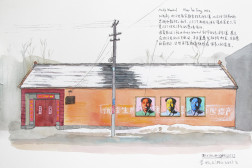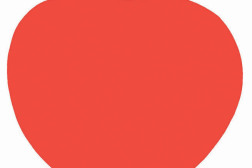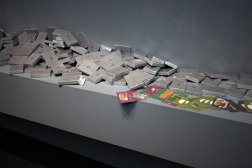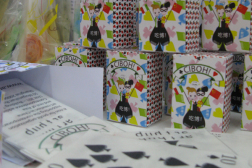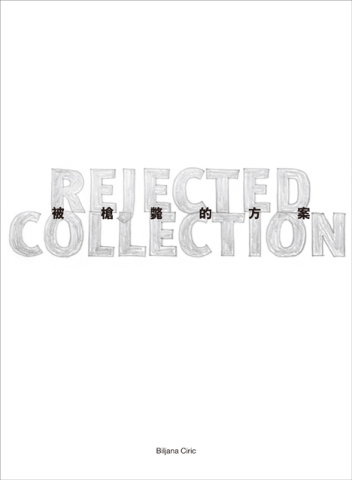
Rejected Collection
Book launch
Time Zone8 Bookstore, Shanghai, September 7th, 2008, 16:00 www.timezone8.com
Arthub, Shcontemporary booth, September 11th, 2008, 14:00
After the exhibition Rejected Collection in September 2007, we are pleased to present the book Rejected Collection, an archive of Chinese artists’ rejected proposals from the early 80’s until today.
In China today, with the growing interest in contemporary art, institutional infrastructures and curatorial models still manifest according to different criteria. In the ‘90s, curatorship, as a profession, began to be repositioned in China. Especially within established institutions and museums, curators become key figures. As their role gained in significance, they also faced problems of institutionalization. On the other hand, some curators turned their attention towards gallery spaces and artists began to get involved in the curating process as well, bringing their own unique strategies. The frequent presence of Chinese artists in foreign art institutions and the expectations of these institutions with regard to exhibitions from China also provide criteria that artists try to question.
How do individual artists deal with these ever-changing modes of critique?
By engaging with this rejected project phenomenon we have an opportunity for a closer look into contemporary art practice, curatorial criteria for artists’ work, and the re-positioning of artists within the triangulation between institutions, the market and experimentation. On the other hand, this project represents a history of the development of Chinese contemporary art and its slow shifting towards the public sphere though institutional infrastructures, the laws of the art world and public acceptance.
This book contains proposals stemming from the early 80’s to the present.
Proposals collected from the early 80’s through to today reveal the transformation of artists’ working methods, as well as the relationship between current infrastructure and it’s establishing process. When assessing the activities of artists in the 80’s, one may find it difficult to understand them as proposals in the same sense as those of today. Since most of the proposals from the 80’s have either vanished or have never existed in proposal form in the first place, the authors have conducted a series of interviews with key figures and exhibition organizers from this period, in order to talk about the different exhibition organizations, artists’ survival strategies and rejected proposals from that time.
In the 90’s, foreign interest in Chinese contemporary art shifted the role of the curator within the Chinese art world, repositioning the relationships between local curators and artists and between local artists and foreign curators, while galleries also started accumulating market value and relevance. In addition, the appearance of biennials and triennials in the region also raised new issues with regard to the relationship between artists and institutions in China.
Along with the rise of new infrastructural developments, the number of rejected proposals also began to rise. After the year 2000, there continues to be a great number of rejected proposals from biennials, museum exhibitions, and so on, so that artists’ working methods have changed to work mainly on proposal bases – submitting proposals, having their proposals rejected, and starting all over again. How does this process of negotiation reflect artists’ practices and exhibition processes, and is there a danger of artists becoming institutionalized is one of the main issues that this book is trying to raise.
The Rejected Collection book project is curated by Biljana Ciric, Shanghai based curator.
Language English and Chinese
Texts by Yuan Gong and Zhao Chuan
Book is published by Charta Art Books
The Book is supported by Yuan Gong Art Organization, Pékin Fine Arts, Ddm Warehouse, Artlinkart, Annie Wong Art Foundation, Intrude Art&Life 366project
Special thanks to Arthub Asia, Time Zone8 and Broadsheet
